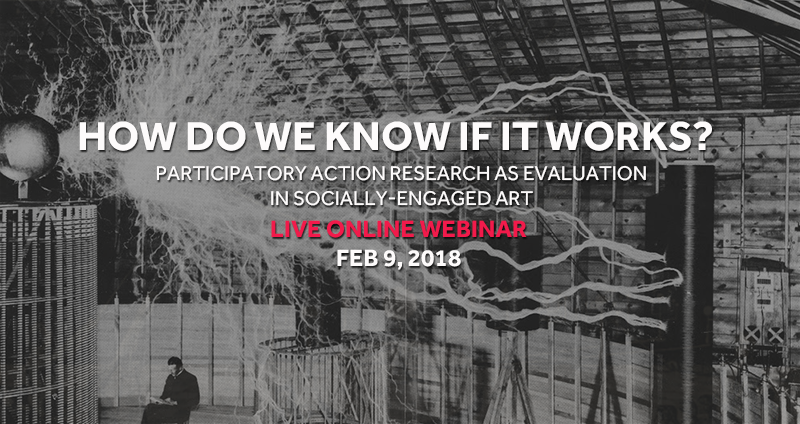This is one of our most popular webinars. We’re sorry if you missed it happening live, but you can check out the video, which is 97.587% as great. Sign up for future webinars to get in on the live action.
In this webinar, Steve and Steve talked with the fantastic scholar/activist Jan Cohen-Cruz and A Blade of Grass Executive Director Deborah Fisher as we discuss ways of assessing and evaluating socially-engaged art that do justice to art and social engagement. Jan and Deborah had so many great examples of art that transforms, and so many smart things to say about how you assess impact creatively.
Check out the fantastic and important work that A Blade of Grass does. We particularly love this video about the social practice artists they support.
The socially-engaged art projects that Deborah and Jan talked about in this webinar:
- Jody Wood – Beauty in Transition.
A mobile hair salon for the homeless. - Sol Aramendi. The Jornalero App, Story on Artsy
Day laborer’s art workshop led to them creating an app to fight wage theft. - Mary Mattingly – SWALE
Floating food forest that acts as a site of imagination and possibility.
Recommended Books:
- Richard Sagor – Collaborative Action Research
- The Craft of Research
Webinar participants had so many great questions and comments. Here’s what some people said about they assess their work:
- Do I feel excited about it both in my gut and in my head?
- I look at responses from participants. Responses from passersby/ people who hear about it. Breadth of media coverage, if it’s a public action. Forced response of power holders, immediately or down the road
- I recently evaluated a long term project partly though inviting a local Masters student to come along and both observe and participate use Jan’s four questions outlined in her “beyond imagination” article – has been one of the most beneficial evaluations of my work we’ve ever done!
- I’ve been thinking about how if I encouraged someone to live tweet my action I might be able to better measure their attitudes before/after an action.
- I look at responses on social media interaction after sharing documentation and materials created as part of the work (comments and interactions on posts, news and articles), responses from different audiences , for example: activations over academic-driven forms (conferences, scholarly articles) and/or socially engaged forms (activating work in a social protest, or on any other type of activity), etc.
Webinar participants also recommended:
- Aesthetic Perspectives tool might be helpful to folks
- Metris’ evaluation of Pillsbury House + theatre’s Art Blocks project is a good resource. All the data collection instruments are in the technical appendix. https://metrisarts.com/evaluations/#AddingItUp
Also, here is a link to a webinar for the NEA we did on the project.
In Part 2, we discussed incredible examples of socially-engaged art that we didn’t get to in Part 1. Catch up on Part 2!
See the list of all of our webinars. Feel free to share with friends.



